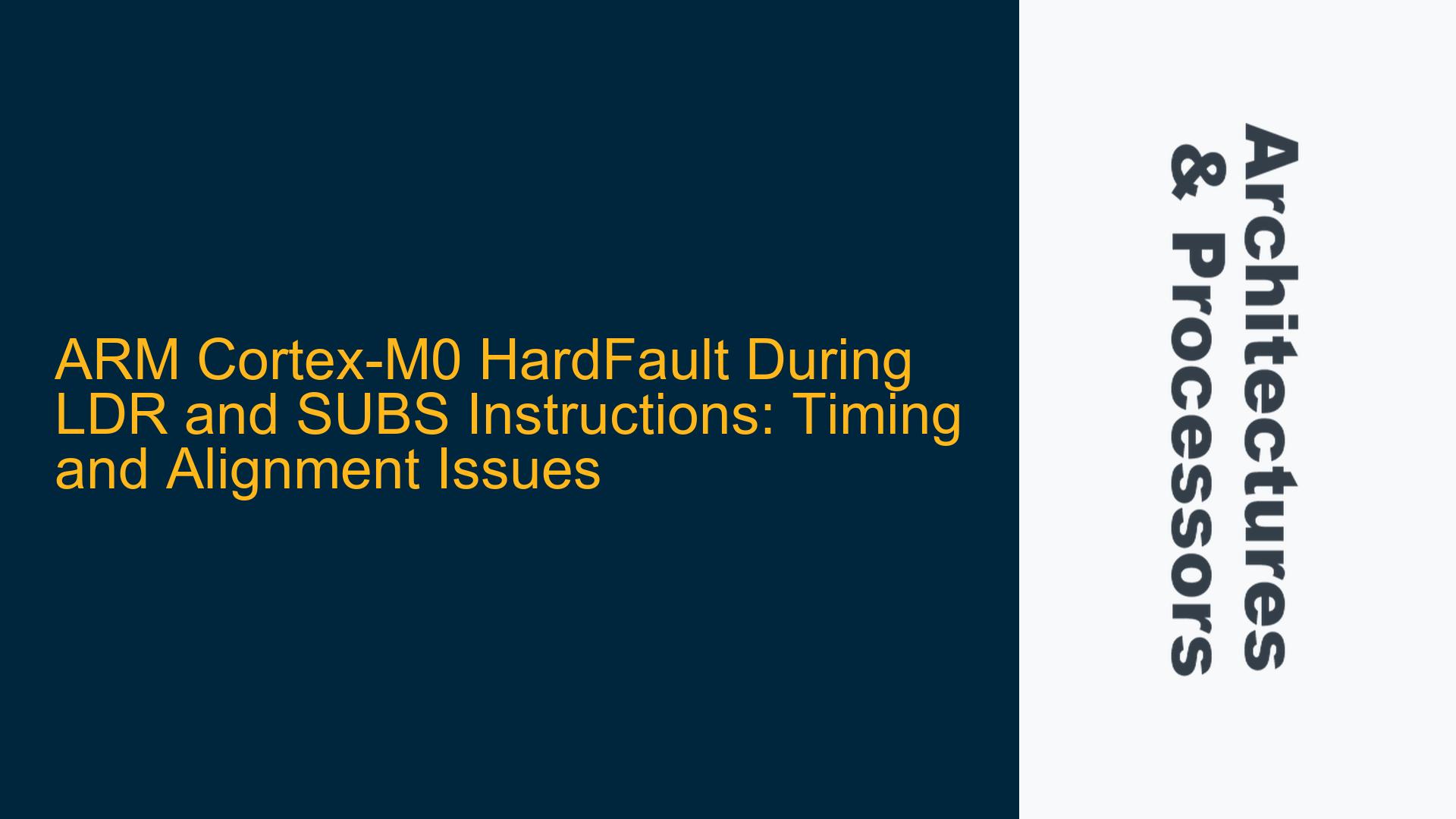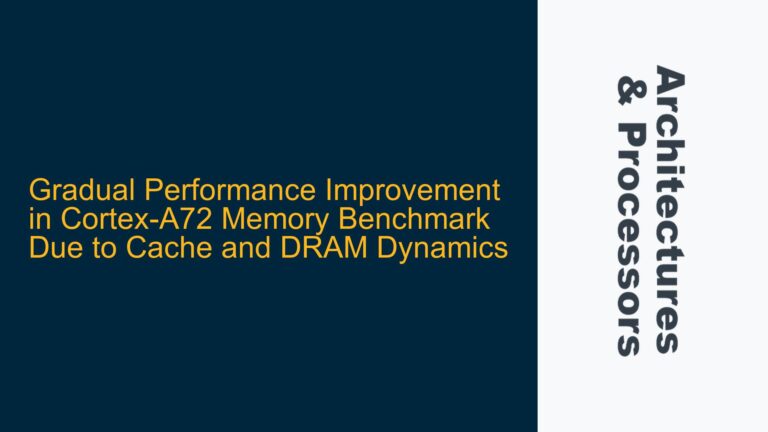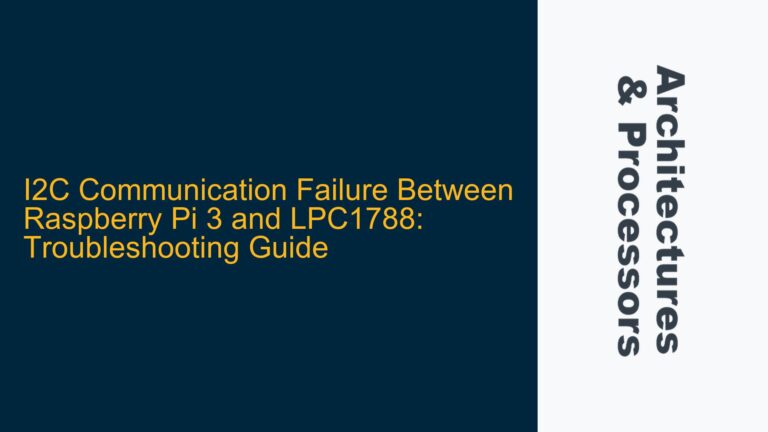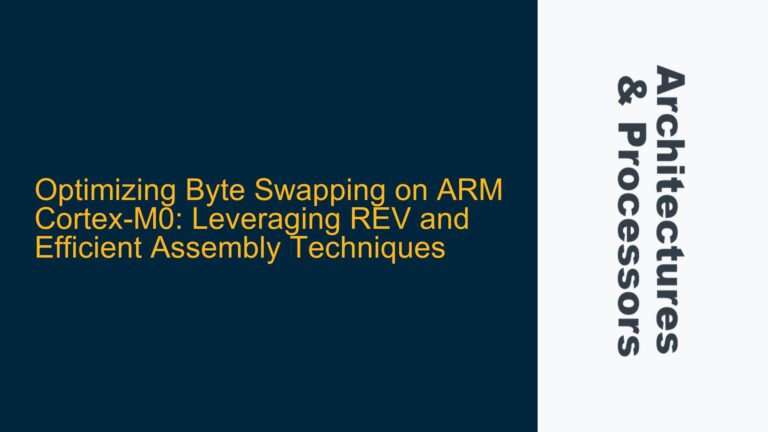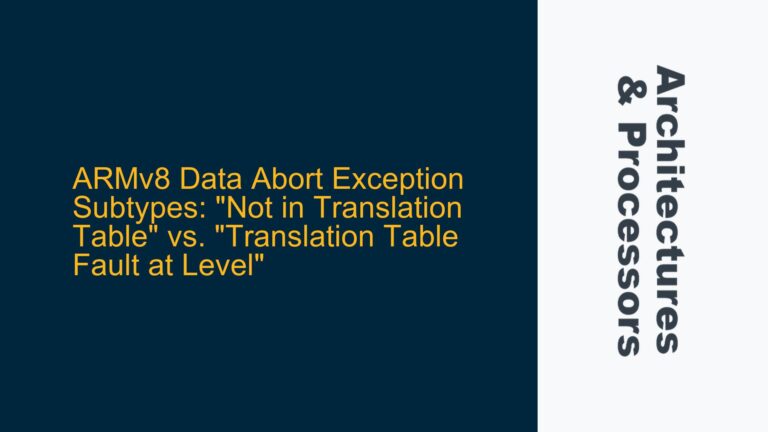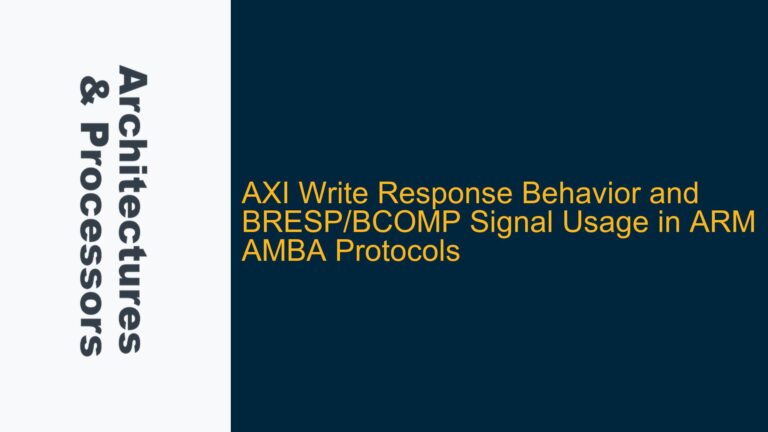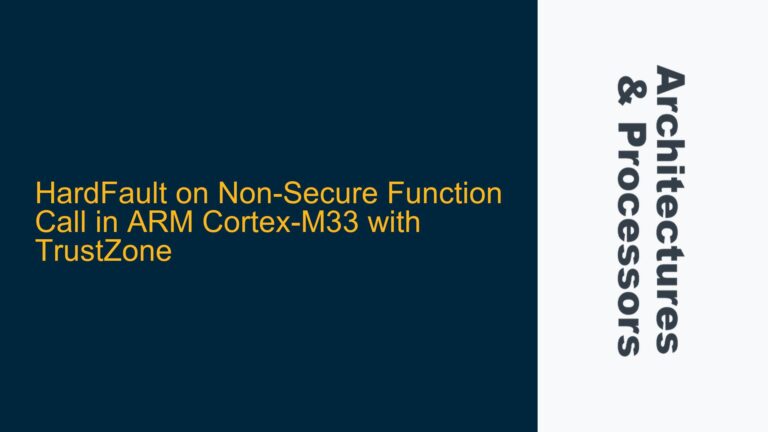ARM Cortex-M0 HardFault Triggered by LDR and SUBS Instructions
The ARM Cortex-M0 is a widely used processor in embedded systems due to its simplicity, low power consumption, and cost-effectiveness. However, subtle hardware-software interaction issues can arise, particularly when dealing with memory access instructions such as LDR (Load Register) and arithmetic operations like SUBS (Subtract with Set flags). In this scenario, a specific chip exhibits a HardFault when executing these instructions, while other chips run the same code without issues. This discrepancy suggests a potential timing or alignment issue, which is critical to diagnose and resolve for reliable system operation.
The HardFault is triggered during the execution of the SUBS instruction, where the result of the subtraction operation is incorrect. Specifically, when R2 is 0xFFFFFFF8 and R4 is 0xFFFFFFF0, the expected result should be 0x00000008. However, the faulty chip produces an erroneous result of 0x40800008. This behavior is consistent across both SRAM and Flash memory, indicating that the issue is not memory-related but rather tied to the processor’s execution logic.
The problem manifests only at higher clock frequencies (11 MHz in this case), suggesting a timing-related issue. At lower frequencies, the SUBS instruction executes correctly, further reinforcing the hypothesis that the fault is due to a timing violation within the processor’s logic. This type of issue is particularly challenging because it may not be detected during standard Design-for-Test (DFT) procedures, which typically operate at lower clock speeds.
Memory Alignment and Bus Matrix Error Responses
One of the primary causes of HardFaults in ARM Cortex-M0 processors is improper memory alignment. The Cortex-M0 requires that memory accesses be aligned to their access size. For example, a 32-bit load (LDR) must be aligned to a 4-byte boundary, while a 16-bit load (LDRH) must be aligned to a 2-byte boundary. Misaligned accesses can trigger a HardFault, as the processor is unable to handle such operations natively.
In this case, the LDRSB (Load Register Signed Byte) instruction is used to load a signed byte from memory. While this instruction does not require alignment, the subsequent SUBS operation depends on the values loaded into registers R2 and R4. If the memory addresses accessed by LDRSB are misaligned or if the bus matrix responds with an error, the loaded values may be incorrect, leading to an erroneous SUBS result.
Another potential cause is the external bus matrix’s response to memory accesses. The bus matrix is responsible for routing memory accesses to the appropriate peripheral or memory block. If the bus matrix responds with an error, the processor may interpret this as a fault condition, triggering a HardFault. This is particularly relevant in systems where memory regions are disabled or powered down to save energy, as accessing such regions can result in bus errors.
Diagnosing and Resolving Timing Violations and Alignment Issues
To diagnose and resolve the issue, a systematic approach is required. The following steps outline the troubleshooting process:
Step 1: Verify Memory Alignment and Access Patterns
The first step is to ensure that all memory accesses are properly aligned. This involves reviewing the disassembly of the code to identify any potential misaligned accesses. In the provided code, the LDRSB instruction is used to load values from memory into registers R2 and R4. The addresses for these loads are derived from the base address of the RAM and ROM data sections. It is essential to verify that these base addresses are aligned to the access size of the LDRSB instruction.
Additionally, the memory map of the device should be reviewed to ensure that the accessed addresses are valid and that the corresponding memory regions are enabled. If the memory regions are disabled or if the addresses fall outside the valid range, the bus matrix may respond with an error, triggering a HardFault.
Step 2: Analyze the SUBS Instruction Execution
The SUBS instruction is at the heart of the issue, producing an incorrect result at higher clock frequencies. To analyze this, the following steps should be taken:
-
Register State Analysis: Capture the state of the registers (R2, R4, and the result register) before and after the SUBS instruction. This can be done using a debugger or by inserting diagnostic code to log the register values. The goal is to confirm that the input values to the SUBS instruction are correct and to observe the erroneous result.
-
Timing Analysis: Since the issue is frequency-dependent, it is crucial to analyze the timing of the SUBS instruction. This involves measuring the propagation delay of the signals involved in the subtraction operation. If the timing constraints are violated, the result may be incorrect. This can be done using logic analyzers or by running the code at different clock frequencies to identify the point at which the fault occurs.
-
Clock Signal Integrity: Ensure that the clock signal provided to the processor is stable and free from noise. Clock jitter or noise can cause timing violations, leading to incorrect execution of instructions. This can be verified using an oscilloscope to measure the clock signal’s quality.
Step 3: Implement At-Speed Testing with Scan Chains
At-speed testing is a critical step in identifying timing-related issues that may not be detected during standard DFT procedures. At-speed testing involves running the scan chains at the normal operating frequency of the device, allowing for the detection of timing violations that occur only at higher clock speeds.
To perform at-speed testing, the following steps should be taken:
-
Configure Scan Chains: Ensure that the scan chains are properly configured and that the test patterns are designed to exercise the critical paths involved in the SUBS instruction. This includes the arithmetic logic unit (ALU) and the register file.
-
Run At-Speed Tests: Execute the scan tests at the normal operating frequency (11 MHz in this case). Capture the results and compare them against the expected values. Any discrepancies indicate a timing violation that needs to be addressed.
-
Analyze Results: If timing violations are detected, the next step is to identify the specific paths that are failing. This may involve reviewing the layout of the chip to identify any potential signal integrity issues or redesigning the critical paths to meet the timing constraints.
Step 4: Implement Data Synchronization Barriers and Cache Management
In systems where timing violations are suspected, implementing data synchronization barriers and cache management techniques can help mitigate the issue. Data synchronization barriers ensure that all memory accesses are completed before proceeding to the next instruction, preventing race conditions and timing violations.
For the Cortex-M0, the following steps can be taken:
-
Insert Data Synchronization Barriers: Insert Data Synchronization Barriers (DSB) before and after critical sections of code, particularly around memory access instructions. This ensures that all pending memory operations are completed before proceeding, reducing the likelihood of timing-related faults.
-
Cache Management: If the system includes a cache, ensure that it is properly managed to avoid cache-related timing issues. This includes invalidating the cache before critical operations and ensuring that the cache is flushed after memory writes.
Step 5: Validate the Fixes and Perform Regression Testing
Once the potential fixes have been implemented, it is essential to validate them and perform regression testing to ensure that the issue has been resolved without introducing new problems. This involves:
-
Running the Code at Different Frequencies: Test the code at various clock frequencies, including the problematic frequency (11 MHz), to ensure that the SUBS instruction now produces the correct result.
-
Stress Testing: Perform stress testing to ensure that the system operates reliably under different conditions, including high CPU load and varying memory access patterns.
-
Regression Testing: Run a full suite of regression tests to ensure that the fixes have not introduced new issues. This includes testing all critical functions of the system to confirm that they operate as expected.
Conclusion
The HardFault triggered by the LDR and SUBS instructions in the ARM Cortex-M0 is a complex issue that requires a thorough understanding of the processor’s architecture, memory access patterns, and timing constraints. By systematically diagnosing the issue, implementing at-speed testing, and applying data synchronization barriers, it is possible to resolve the issue and ensure reliable system operation. This approach not only addresses the immediate problem but also provides a framework for diagnosing and resolving similar issues in future designs.
